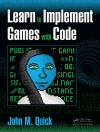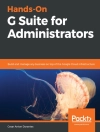El propósito de esta obra es transmitir a los equipos responsables de la ciberseguridad, estudiantes y profesionales del sector una visión completa de las características y alcance de la ciberseguridad cuando se persigue proteger activos industriales o que prestan servicios esenciales. Lo que habitualmente se denomina ciberseguridad industrial.
El libro se estructura en diez capítulos de fácil lectura y recoge de forma práctica y didáctica los siguientes temas:
– Los activos más comunes que pueden encontrarse en entornos industriales o en infraestructuras críticas y las principales amenazas y grupos APT que pueden provocar un incidente de ciberseguridad.
– Los marcos y estándares disponibles para gobernar y gestionar el ciberriesgo OT (o de operación).
– Las vulnerabilidades de los activos que convergen en un entorno industrial o crítico, así como las recomendaciones técnicas y procedimentales que deberían desplegarse.
– Las medidas y soluciones existentes que posibilitan la detección temprana y la correlación de eventos en entornos industriales.
– Las mejores prácticas para diseñar una estrategia de continuidad de negocio que incluya planes de respuesta y recuperación ante incidentes en infraestructuras críticas.• Las amenazas que aparecerán en los próximos años y el tipo de contramedidas que deberán ser desplegadas.
Jadual kandungan
AUTORES
PRÓLOGO
PREFACIO
CAPÍTULO 1. AUTOMATIZACIÓN, DIGITALIZACIÓN Y CIBERSEGURIDAD
INDUSTRIAL
1.1 INTRODUCCIÓN
1.2 LA AUTOMATIZACIÓN Y LA DIGITALIZACIÓN DE LOS ENTORNOS
INDUSTRIALES Y DE LAS INFRAESTRUCTURAS CRÍTICAS
1.3 DISPOSITIVOS DE CONTROL, SISTEMAS DE GESTION Y
SEGURIDAD EN ENTORNOS INDUSTRIALES
1.4 COMUNICACIONES Y PROTOCOLOS INDUSTRIALES
1.4.1 Comunicaciones y medios industriales
1.4.2 Principales protocolos industriales
1.5 INFRAESTRUCTURAS CRÍTICAS Y ACTIVOS ESPECÍFICOS
1.6 EL CONCEPTO DE INDUSTRIA 4.0
1.7 LA CIBERSEGURIDAD INDUSTRIAL
1.7.1 ¿Por qué ciberseguridad industrial?
1.7.2 Ciberseguridad OT versus Ciberseguridad IT. Hacia la convergencia
1.8 PARA LLEVAR
1.9 LECTURAS RECOMENDADAS
CAPÍTULO 2. IMPACTO DE LAS PRINCIPALES APT´S EN ENTORNOS
INDUSTRIALES E INFRAESTRUCTURAS CRÍTICAS
2.1 INTRODUCCIÓN
2.2 DEFINICIÓN Y CARACTERÍSTICAS DE UNA APT
2.3 FASES DE UNA APT
2.4 CONSECUENCIAS Y TIPOS DE PÉRDIDAS
2.5 GRUPOS APT, MALWARE ESPECÍFICO E INCIDENTES EN
INFRAESTRUCTURAS CRÍTICAS
2.6 ANÁLISIS DEL IMPACTO Y LAS PÉRDIDAS EN DIFERENTES
INCIDENTES DE CIBERSURIDAD OT
2.7 PARA LLEVAR
2.8 LECTURAS RECOMENDADAS
CAPÍTULO 3. GOBERNANZA, MARCOS DE GESTIÓN DEL CIBERRIESGO,
DEFENSA EN PROFUNDIDAD Y ESTÁNDARES OT
3.1 INTRODUCCIÓN
3.2 DETECTANDO GAPS EN EL ENTORNO INDUSTRIAL
3.3 EMPEZANDO POR LA ORGANIZACIÓN
3.4 DEFENSA EN PROFUNDIDAD
3.5 PONIENDO EN MARCHA UN MARCO DE CIBERSEGURIDAD
3.6 GESTIÓN DEL CIBERRIESGO
3.7 MARCOS DE CONTROLES
3.8 REPORTING, MÉTRICAS E INDICADORES
3.9 CUMPLIMIENTO
3.10 PARA LLEVAR
3.11 LECTURAS RECOMENDADAS
CAPÍTULO 4. SEGURIDAD EN REDES INDUSTRIALES
4.1 INTRODUCCIÓN
4.2 CARACTERÍSTICAS DE LAS REDES INDUSTRIALES
4.3 DEBILIDADES, VULNERABILIDADES Y AMENAZAS
4.4 HERRAMIENTAS Y SOFTWARE
4.5 MODELOS DE DEFENSA
4.6 CONTRAMEDIDAS Y EQUIPAMIENTO
4.7 PARA LLEVAR
4.8 LECTURAS RECOMENDADAS
CAPÍTULO 5. SEGURIDAD EN PROTOCOLOS INDUSTRIALES
5.1 INTRODUCCIÓN
5.2 ESCENARIO ACTUAL DE VULNERABILIDADES Y AMENAZAS
EN PROTOCOLOS INDUSTRIALES
5.3 COMO REMEDIAR Y MEJORAR LA SEGURIDAD DE LOS
PROTOCOLOS INSEGUROS
5.4 PROTOCOLOS INDUSTRIALES SEGUROS
5.5 PARA LLEVAR
5.6 LECTURAS RECOMENDADAS
CAPÍTULO 6. SEGURIDAD EN DISPOSITIVOS DE CONTROL Y
SISTEMAS DE GESTIÓN EN TIEMPO REAL. ATAQUES ESPECÍFICOS Y
CONTRAMEDIDAS
6.1 INTRODUCCIÓN
6.2 ATAQUES QUE PERSIGUEN CONTROLAR EL PROCESO
6.3 ATAQUES QUE PERSIGUEN IMPACTOS TRADICIONALES
6.4 ALGUNAS REFLEXIONES
6.5 MITIGACIONES ESPECÍFICAS
6.6 PARA LLEVAR
6.7 LECTURAS RECOMENDADAS
CAPÍTULO 7. SEGURIDAD EN INDUSTRIAL INTERNET OF THINGS
(IIOT)
7.1 INTRODUCCIÓN
7.2 ARQUITECTURA DE UN PROYECTO IOT
7.3 CICLO DE VIDA DE UN PROYECTO IIOT
7.4 PRINCIPALES AMENAZAS Y VULNERABILIDADES EN IIOT
7.5 ANÁLISIS DE SEGURIDAD INICIAL EN ENTORNOS IIOT
7.6 CAPACIDADES DE SEGURIDAD DESEABLES EN UN ENTORNO
IIOT
7.7 GOBERNANZA DE LA SEGURIDAD EN PROYECTOS IIOT
7.8 PARA LLEVAR
7.9 LECTURAS RECOMENDADAS
CAPÍTULO 8. MONITORIZACIÓN Y DETECCIÓN TEMPRANA
DE AMENAZAS Y ANOMALÍAS EN ENTORNOS OT
8.1 INTRODUCCIÓN
8.2 CONSIDERACIONES GENERALES
8.3 MONITORIZACIÓN BASADA EN TRÁFICO
8.4 MONITORIZACIÓN DE ACTIVOS
8.5 DETECCIÓN Y ALERTA TEMPRANA
8.6 GESTIÓN DE EVENTOS Y ALERTAS
8.7 CONSIDERACIONES EN EL ÁMBITO INDUSTRIAL
8.8 PARA LLEVAR
8.9 LECTURAS RECOMENDADAS
CAPÍTULO 9. PLAN DE RESPUESTA ANTE INCIDENTES Y CONTINUIDAD
DE NEGOCIO EN INFRAESTRUCTURAS CRÍTICAS
9.1 INTRODUCCIÓN
9.2 TIPOLOGÍA DE INCIDENTES
9.3 CICLO DE VIDA DEL INCIDENTE
9.4 INCIDENTES EN LA CADENA DE SUMINISTRO.
¿CÓMO IMPACTAN?
9.5 DE LA GESTIÓN DE INCIDENTES A LA GESTIÓN DE LA CRISIS
9.6 PLAN DE CONTINUIDAD DE NEGOCIO
9.7 PARA LLEVAR
9.8 LECTURAS RECOMENDADAS
CAPÍTULO 10. ESCENARIOS PARA LO IMPREDECIBLE
¿QUÉ PODEMOS ESPERAR?
Mengenai Pengarang
MARTA BELTRÁN PARDO
Ingeniera Electrónica (Universidad Complutense de Madrid, 2001), Licenciada en Ciencias Físicas, rama de Física Industrial y Automática (UNED, 2003) y Doctora en Informática (Universidad Rey Juan Carlos, 2005).
FERNANDO SEVILLANO JAÉN
Licenciado en Ciencias Económicas y Empresariales (Universidad Complutense de Madrid, 1995), Máster en Gestión e Investigación de la Comunicación Empresarial (Universidad Rey Juan Carlos, 2009) y Doctor en Informática (Universidad Rey Juan Carlos, 2010).
ANTONIO RODRIGUEZ USALLAN
Ingeniero Superior Industrial, especialidad Mecánica, (Universidad Politécnica de Madrid, 1982). Con 36 años de experiencia, su carrera profesional se ha desarrollado siempre en el sector privado y en compañías multinacionales de distintos sectores industriales (automoción, electrónica, química, entre otros), colaborando además estrechamente con asociaciones profesionales, ISA (International Society of Automation), siendo presidente de su filial en España y CCI (Centro de Ciberseguridad Industrial) como Experto, donde es profesor de la Escuela de Ciberseguridad y participa en la publicación de documentos del Centro.
AGUSTÍN VALENCIA GIL-ORTEGA
Ingeniero Industrial (Universidad Pontificia Comillas ICAI, 2001), Director de Seguridad (Universidad a Distancia de Madrid, 2018) y Master en Seguridad Informática (Universidad Politécnica de Cataluña – Universidad Internacional de Valencia, 2019).
DORTA ECHAVE GARCÍA
Técnico Superior en Sistemas Informáticos y Telecomunicaciones y ‘Especialista en Diseño y Seguridad en Redes’ por la Universidad Pública del País Vasco.
SUSANA SÁNCHEZ MELLA
Licenciada en Ingeniería Industrial Superior (Universidad Carlos III de Madrid, 2001). Con 20 años de experiencia, su carrera profesional se ha desarrollado en el sector de las infraestructuras críticas muy ligado a proyectos de automatización industrial.
ELENA MATILLA RODRÍGUEZ
Ingeniera Técnica de Telecomunicaciones, especialidad Telemática por la Universidad Pontificia de Valencia, 2000), Master en seguridad informática por la Universidad Oberta de Catalunya, 2007 y en posesión de múltiples certificaciones de ciberseguridad: CISA, CISM, CRISC y CGEIT de ISACA, ISO 27001, ISO 22301.
ERIK DE PABLO MARTÍNEZ
Licenciado en Física por la Universidad Autónoma de Madrid y PDD por el IESE. Ha desarrollado su carrera profesional en el Grupo Repsol, inicialmente en tareas de innovación tecnológica en procesos industriales, incluyendo la introducción de los primeros sistemas de Inteligencia Artificial aplicada al control industrial en tiempo real.












